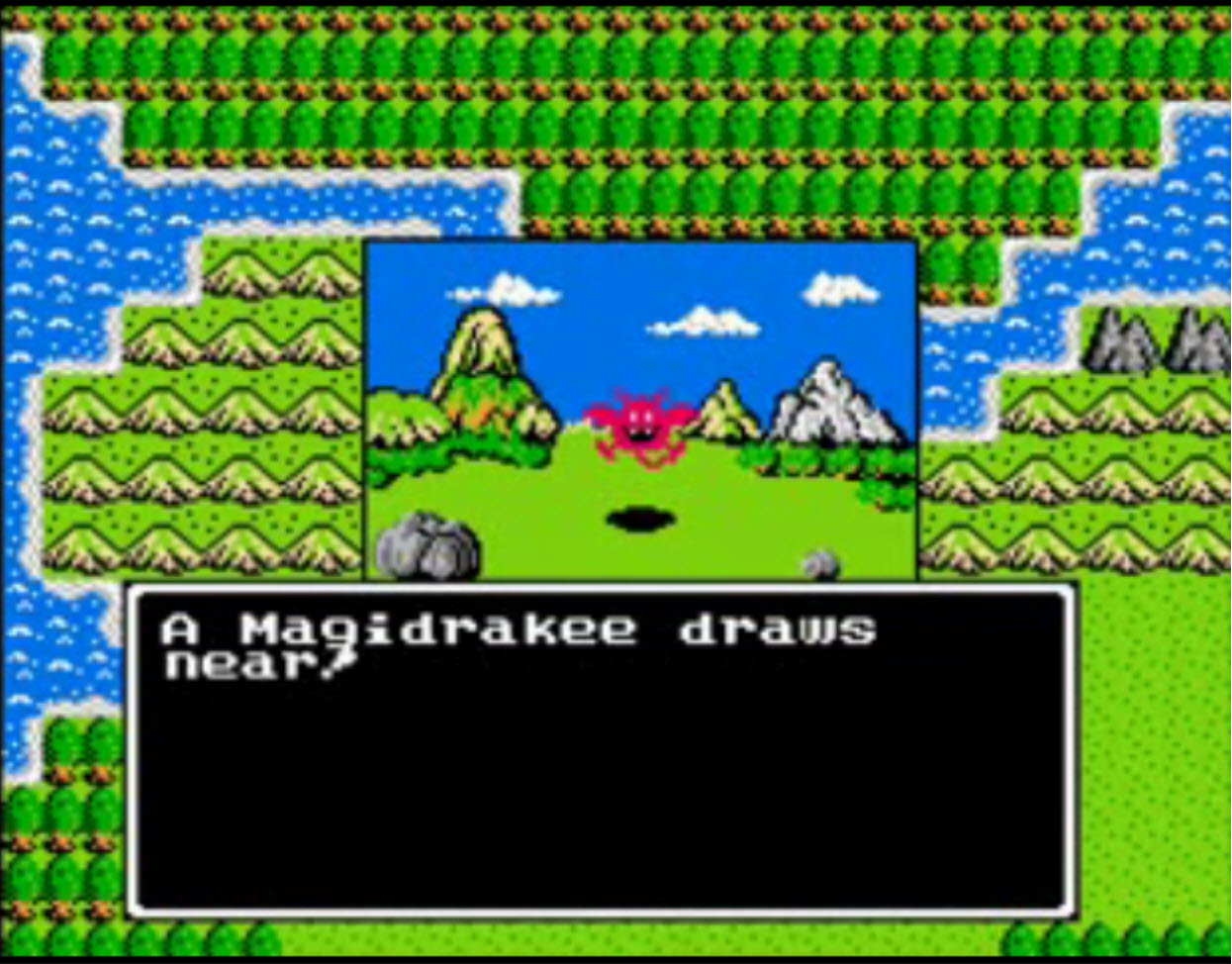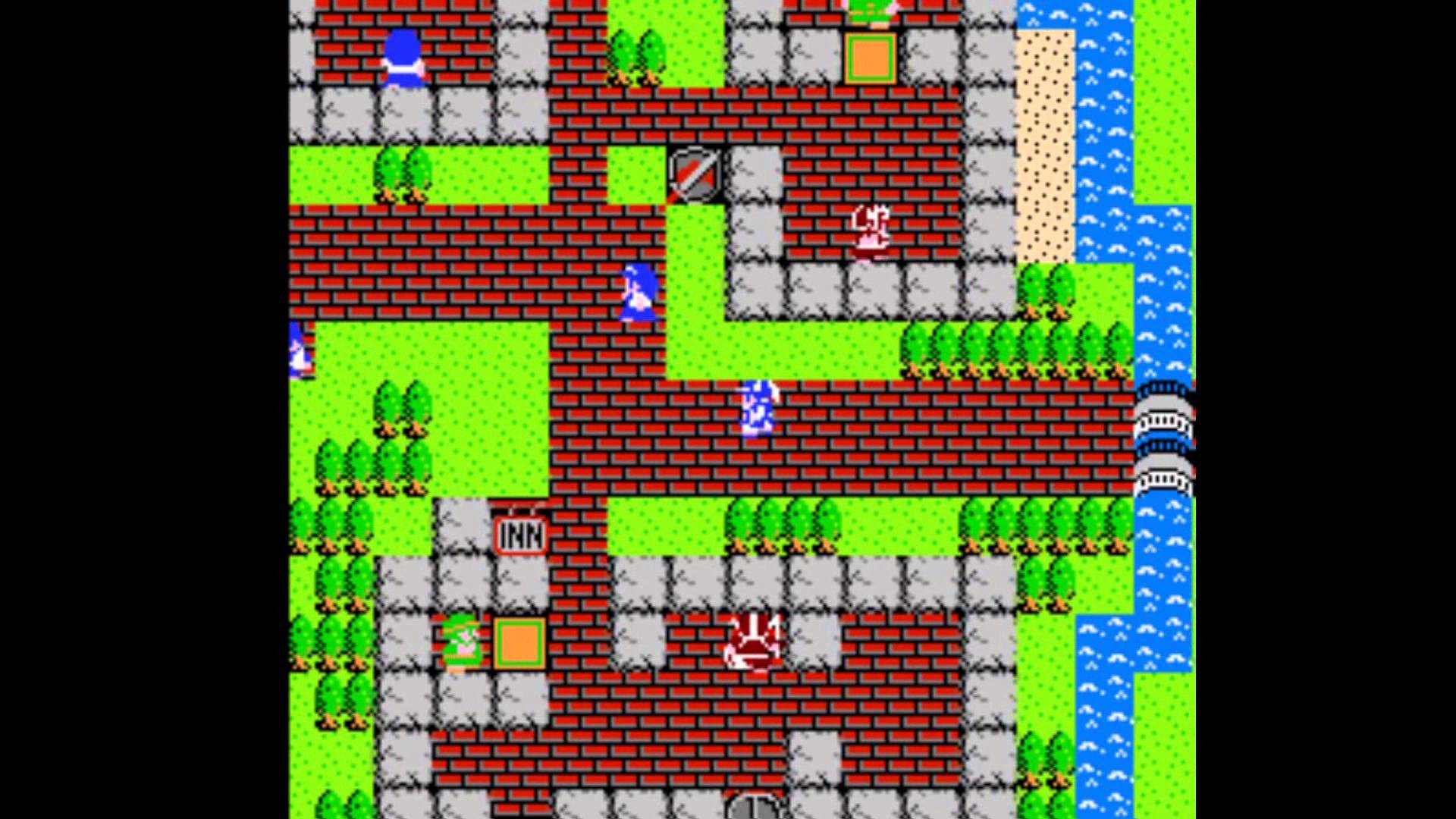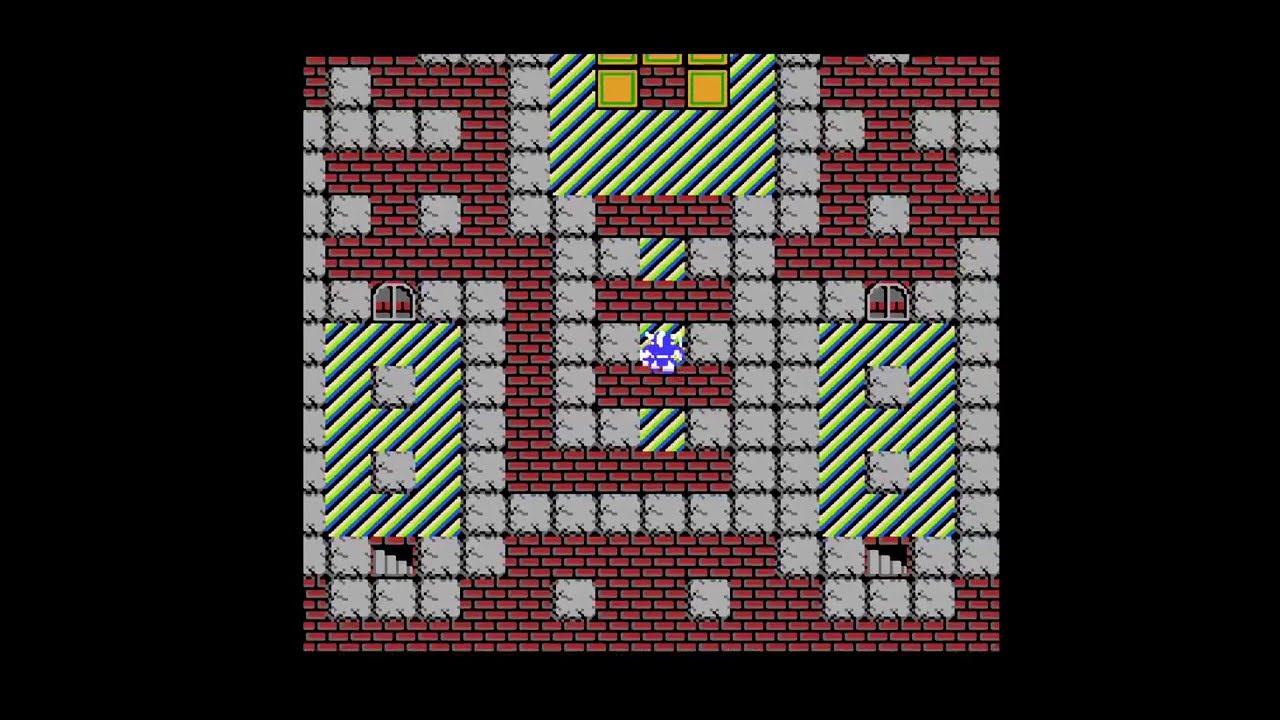Or, “How Enix Stole my Soul”
by Jason Parker [Ragachak]

This is where it all began for me. Few games since challenged me quite like this one did. Nintendo Power did something revolutionary [a lot of things to be honest] in giving away Dragon Warrior 1 with Nintendo Power. In fact, every subscriber back then received a copy. Why would they do such a thing? Could that devalue the game, make it so people would not want to buy it if they could just get it with a subscription to a gaming magazine? Well for one, it really made a lot of customers happy, and two, Video Game RPGs were not exactly common place back then. This was a big gamble for Enix; this to me is playing the long game. Get them hooked on the challenge and charm now, so they’ll buy future installments. Spoiler Warning: It worked. Were there RPGs for the NES in the early days, not to mention the Personal Computers? Of course, there were! Final Fantasy from Squaresoft came out in 1987. Dragon Warrior came out in Japan as Dragon Quest before that, but we wouldn’t receive it until 1989. Sure, Hydelide, Legend of Zelda and others existed, this was an RPG unlike any we had ever played before. It was my first and the first for many others in my generation. As an avid reader, it felt like an epic story was playing out before my eyes. Even if the story was pretty simple, it was in the exploration, the journey.

Back in the days before the Internet, this game was insanely hard. The only tips we had were from other people who owned it, or from Nintendo Power. The only friends I had who owned the game gave me their copies [yes, copies], and I did not meet anyone who knew anything about it until Middle School that had any interest in Roleplaying games. This was a game about exploration, talking to everyone, and especially back in those days, talking to every NPC was important. This is good until you realize that the translations of these early RPGs were incredibly poor and some of the tips may not be useful, or even relevant. What’s fascinating about this game, in particular, is that you can see the final dungeon/castle from the moment you leave Tantegel Castle. The home of the Dragonlord, Castle Charlock can be seen right across the water. Could you get there now? No, of course not. You’d die! But you know your final goal is right over there.

The goal in Dragon Warrior 1 is pretty simple: The Dragonlord stole the Orb of Light, and now Alefgard is in peril. You are the descendant of the Legendary Hero, Erdrick [Roto in the Japanese version] and it’s your goal to find his weapons and armor, prepare yourself for battle, and to ultimately defeat the Dragon Lord. This is easily one of the longest games in the early days of Nintendo, clocking in at least 20 hours. That’s what the average probably is. It took way longer for me, because that game is so incredibly difficult, especially in Elementary School in the late 80s. You start off with your little bamboo pole, slapping the life out of Slimes, Red Slimes, Drakees and such, until you get to the end, having found Erdrick’s Sword and Armor, spent hours farming gold for the Silver Shield, the Token of Erdrick [proof you are his descendant], the Tablet of Erdrick [the tale of the hero, the journey ahead for you] and far more. There are so many important items you need, and if you don’t figure out how to get all of them, you won’t get far. Nothing is useless in Dragon Warrior. Even the Cursed Items are useful: They sell for money! The cursed belt is kind of crap, but if you can find the rare and insanely valuable Cursed Necklace, you can practically buy your Silver Shield with it.

Dragon Warrior was revolutionary, and each subsequent game pushed the envelope of what you could do in a video game, but Dragon Warrior got to it first. Sure, Final Fantasy had a party of generic heroes that you commanded, but in Dragon Warrior, it’s just you. One lone, badass hero to save the world. You did similar things though: Fight bad guys, gain exp [level cap 30], buy new weapons, armor, find important items, and travel through dungeons. There aren’t many bosses though because this world is far more open than the mega-linear Final Fantasy. You still have a linear goal in Dragon Warrior, but you can do a lot of it in different orders if you’re brave/foolhardy enough. In Final Fantasy 1, you had a host of bosses: Lich, Kary, Kraken, Tiamat, Garland, Chaos, hidden boss Warmech, Astos the Dark Elf, Vampire. Your bosses in Dragon Warrior:
- Green Dragon: You fight it to save the Princess. Fun fact: You can actually beat the game without saving her, but the Gwaelin’s Love item is invaluable. There are other Dragons though.
- Golem: He guards Cantlin, and is ferociously powerful. That is, unless you have the Fairy Flute, which puts the rock monster to sleep. Then you can just smash it to pieces and get into the Cursed City of Cantlin. Another pretty simple encounter if you are smart about what you do.
- Dragonlord: The King of Charlock Castle, surrounded by the most powerful fiends in this world. The strongest, the bravest of the AxeKnights. There are no tricks or secrets to besting him. Have the best armor and weapons, be level capped, have plenty of items, and even then he could still destroy you with a lucky blast of flame.

This is where the game kind of falls off for a lot of players though. Not having any idea where to go, having bosses you could completely miss in the darkness of a cave, or not being strong enough can be a huge turn-off. Unless you literally talk to everyone, you will miss so much. Trying to figure out where to buy keys, or how to make the Rainbow Drop, learning which treasure chests respawn, how to heal smart instead of just throwing herbs around. Final Fantasy is easy: You go to the next area, for the most part. It has mysteries and such, but Dragon Warrior 1 is a mystery for the first time. If you don’t have a strategy guide, FAQ, or someone around who knew it like the back of their hand, you’re out of luck. But that’s half the fun to me, exploring and learning that every bridge you cross has stronger enemies, certain overworld types have stronger enemies/higher encounter rates. Not to mention You. Have. To. Grind. Forever. You always need the newest weapons and armor every time you get to a new town, and the exp/gold totals in this game are absurd until much later on. If you aren’t stronger than all of the encounters in this game, you’re in for a bad time. There are hints of useful items, but they’re pretty vague. The hint for the Fairy Flute? “In legends, it is said that fairies know how to put Golem to sleep.”
“Art Thou the Descendant of Erdrick? Hast Thou Any Proof?” 4/5 [Holds Up]

I truly began to hate that dialogue. More than you could ever know. This is a hardcore game for only the bravest. Most of my friends at the time made sure I knew that it was impossibly difficult, and “stupid” for that reason. I didn’t feel the same. There was a “Dragon Warrior Strategy Guide” from Nintendo Power, but I did not have it. I had to just explore, and hope I could find someone who also knew something about the game. But Dragon Warrior taught me a lot about perseverance and fostered an eternal love of Roleplaying Games. It wasn’t going to hold my hand, make anything easy on me [ever] and told an honestly, pretty simple story. There’s a bad guy on the Isle of Dragons, magical items can get you there, so go do that thing. It’s also the first RPG I played with an alternate ending. It’s the first game just in general I could recall that had multiple endings. When you get to the Dragonlord, he asks you to join him, which I did mention in at least one previous editorial. If you say yes, the game freezes because you sell your soul to the Dragonlord and while you control half the world now, that isn’t very long-lasting. I love that Dragon Quest Builders comes back to this. Does this games challenge hold up in 2017? I’d like to think so. Sure you know where everything is now, or can. But knowing what lies in Brecconary, Kol, or Cantlin will not make the game any easier. It’s simple, but it’s fascinating how much of it lives on to this day. The entire cast of enemies, that artwork is still used in modern Dragon Quest titles. Dragon Warrior/Quest had an all-star cast at Enix, created much-needed competition [until their merger, anyway] with Squaresoft. Dragon Warrior 1 showed there’s more than one way to create an epic RPG, and would be an alternative to the Final Fantasy franchise even to this day.







